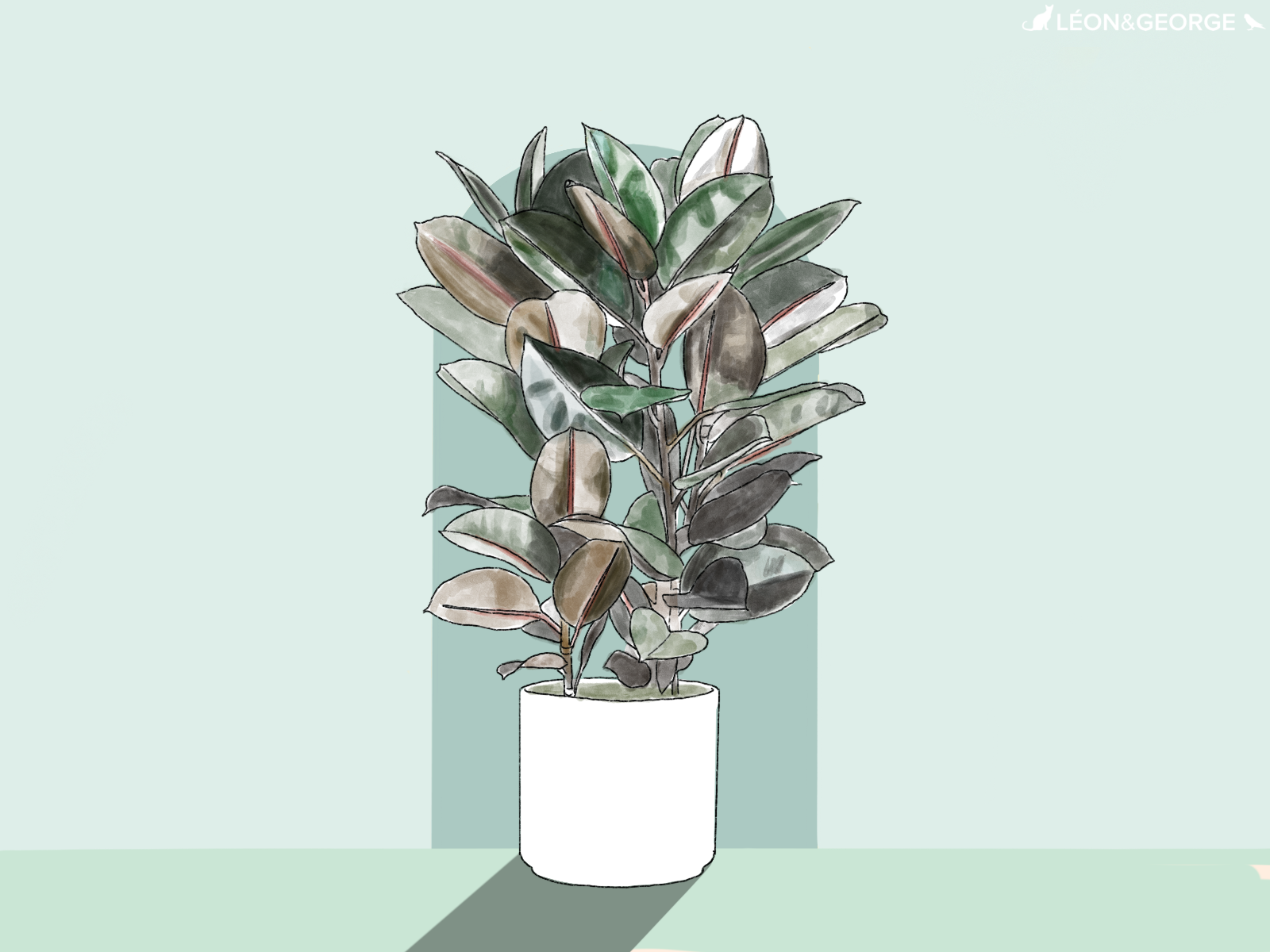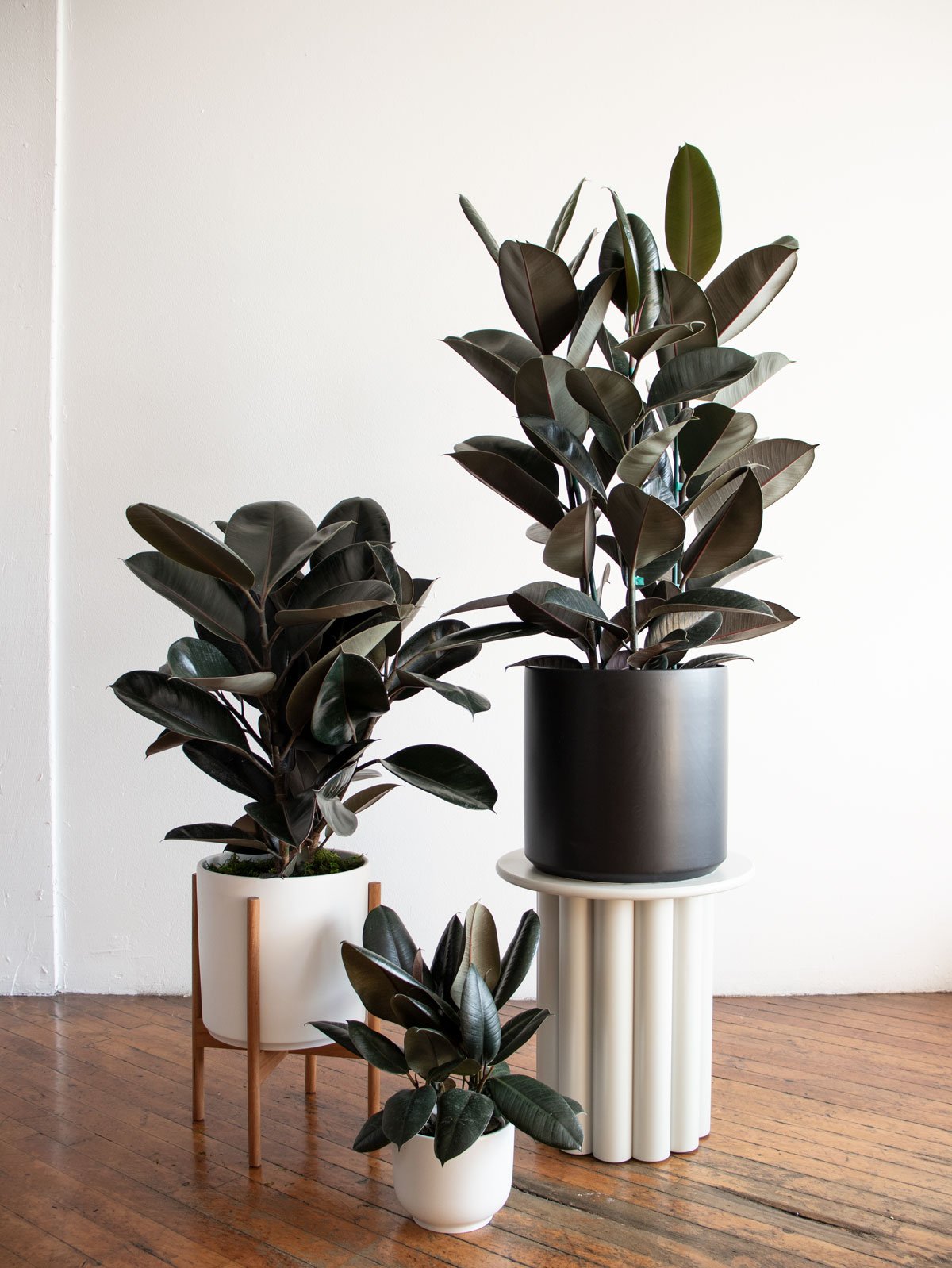The Rubber Tree
AKA ficus elastica
AKA ficus decora
AKA ficus robusta
The Rubber Tree, also known as a Rubber Plant or Ficus Elastica, is one of the hardiest members of the ficus family, often times notorious for being fickle, finicky, and for some just plain difficult. That tends to not be the case with the rubber tree, whose dark burgundy leaves shine with just a little TLC. Read on for simple tips to care for the Rubber Tree!
What type of light does the Rubber Tree need?
Rubber Trees perfer bright indirect light, though they can also adjust to medium levels of light. Place your Rubber Tree no further than three to four feet away from a bright window for best results.
How to water your Rubber Tree
Consistency is key! Water your Rubber Tree when the topsoil feels dry, usually once a week to every ten days. Avoid overwatering, and keep in mind that your watering schedule may be less frequent during winter months.
BLACK SOAP SPRAY
All natural and made with just four ingredients, L'Original acts as a natural leaf shine, insecticide, and fungicide for all living plants.
$24
How fast does the Rubber Tree grow?
In prime conditions, the Rubber Tree is a fast grower and can grow up to 10 feet tall indoors. Fertilize your Rubber Tree 1-2 times per month in the spring and summer with indoor plant food, or foliar feed year round.
Shop leaf shine, insecticide and fungicide at leonandgeorge.com
Common problems with Rubber Trees
Yellow or brown leaves - overwatering
Symptom - leaves turning yellow or brown, usually at the bottom of the tree
Cause - too much water, not enough light
Remedy - allow soil to dry out completely, sometimes this can take 2-3 weeks. Check the soil’s moisture through the drainage holes at the bottom. Overwatering can lead to more severe ailments and that may eventually require you change the soil.
Read more about discolored leaves here.
Leaf drop - unstable temperatures
Symptom - leaves dropping
Cause - cold air drafts, overly dry climates, or not enough light
Remedy - make sure your plant is placed away from air vents or cold air drafts. While rubber trees can adapt to indoor climates, they prefer warmth and high humidity. If the possible cause is not enough light, move the rubber tree to medium to brightly lit area.
Read more about Rubber Tree leaf drop.
Leaf droop - over or underwatering
Symptom - leaves sagging or drooping
Cause - most likely underwatering, but could also be overwatering
Remedy - always check the soil before watering a Rubber Tree. It should be dry to the touch before watering again. If you suspect it’s been overwatered, allow soil to dry out completely before watering again.
How to maintain a beautiful and healthy Rubber Tree
Take care of your Rubber Tree and it will take care of you! Below are simple tips to continue caring for your Rubber Tree over time.
Pruning - Remove dry or dead leaves all year round, but save any major pruning for the spring and summer months. When pruning your rubber tree, wear gloves and protect your floor with newspaper — the sap that leaks out can be sticky and damage floors. Use sharp, clean shears and cut just above the node at a 90 degree angle.
Cleaning - Take each leaf between two soft tissue cloths and wipe off the top to reveal a healthy shine (also helps the plant soak in more light!).
Repotting - Houseplants grow much slower than they would in the wild. Depending on the size of your plant and the density of the roots, this is nice to do every 2-3 years to provide fresh nutrients and encourage new growth.
When to repot - if the roots start to become visible outside the soil, it is time to consider repotting your rubber tree
Pot sizing - if you want your plant to grow taller, find a nursery pot that’s 2” in diameter larger than the current pot. If you want your plant to stay the same height, you can reuse the same pot and simply change the soil.
Get your hands dirty - spread out newspaper on the floor, remove the plant from the pot and shake off as much of the old soil as possible so that you have clean roots. Place the plant in the center of the pot, add new soil and pat down firmly. Water the soil thoroughly and place the plant in an area with bright indirect light. Your plant will take 2-4 weeks to settle from the shock and adjust to its new home.
How to propagate a Rubber Tree
Whether you want to recycle your Rubber Tree cuttings or you simply want to create a new plant, propagating the Rubber Tree is simple. Though there are many ways to do this, water propagation is generally the easiest way to go about it. Follow these instructions to propagate your Rubber Tree:
Select a small branch to propagate - Using sharp, clean scissors or shears, cut a two to three inch branch just above a node (a leaf joint).
Place in water - Find a clear glass and fill with water. Make sure only the stem of the branch is submerged, and no leaves are sitting in the water.
Place in a bright area and wait! - Avoid any direct sun. You may need to change the water out every few days to keep it fresh. It could take up to several weeks for your cutting to form roots.
Transfer to soil - After some time, you will start to see tiny white roots emerging from the cutting. Give it a few more days until the roots have grown, and then transfer to indoor potting soil. A small pot is best — no larger than 6” in diameter.
Keep hydrated - During the first few weeks, or until your plant feels firmly rooted in its soil, regularly water and drain your plant. The soil should be just barely moist to the touch at all times.
RUBBER TREE
This plant grows quickly in ideal conditions and is easy to care for. The crimson casings of new leaves adds a pop of color and is the perfect statement piece for budding plant parents.





















